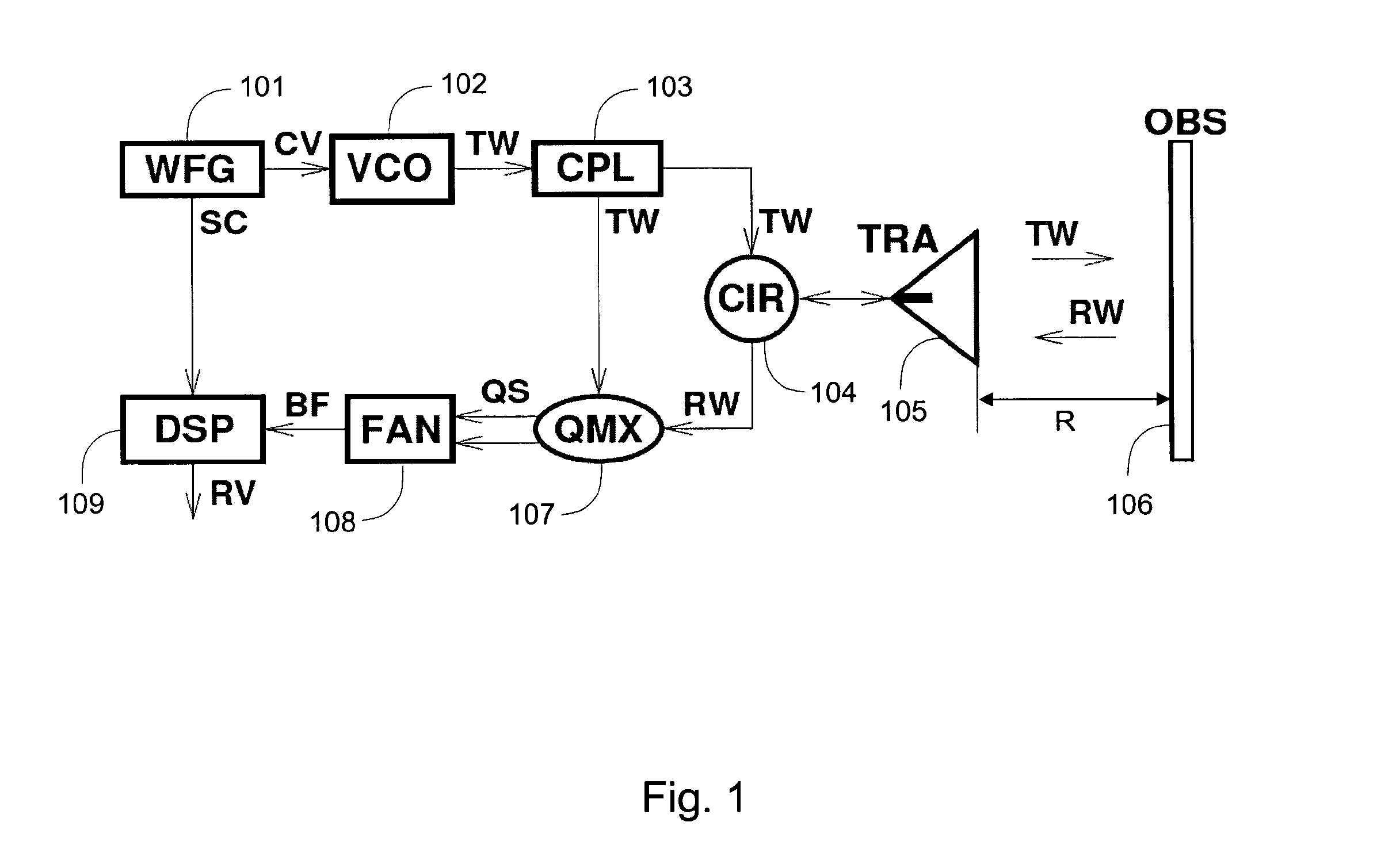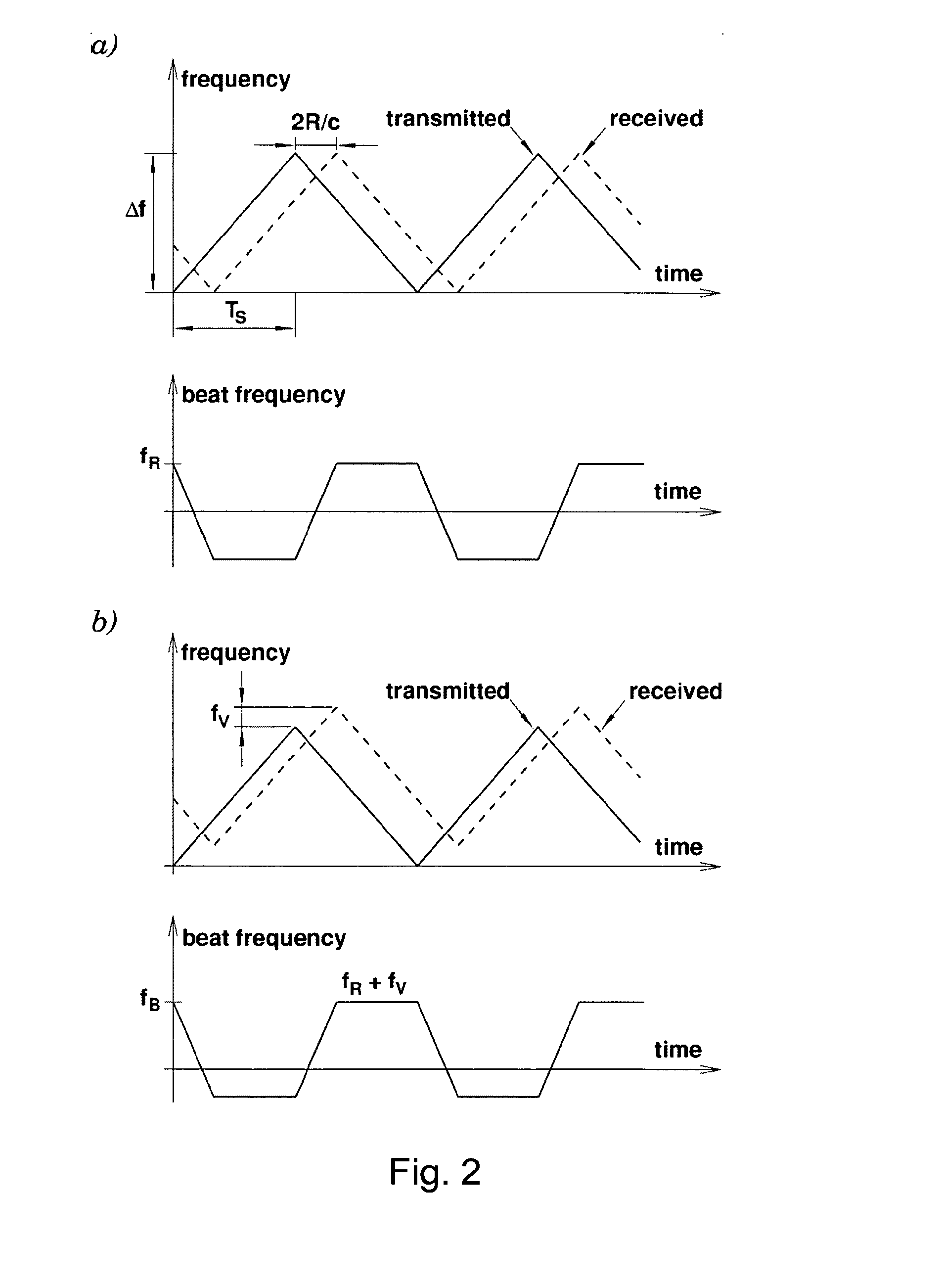Object detection with multiple frequency chirps
a technology of object detection and multiple frequency chirps, applied in the direction of reradiation, measurement devices, instruments, etc., can solve the problems of multi-user interference, inability to suppress others, and neglected important problems such as the resistance to mutual interference, so as to reduce the effect of a single catastrophic interferen
- Summary
- Abstract
- Description
- Claims
- Application Information
AI Technical Summary
Benefits of technology
Problems solved by technology
Method used
Image
Examples
example 1
Optimal Chirp Sextet
[0091]Assume that it is required to design an advantageous illuminating waveform comprising six frequency chirps. Suppose also that the ratio Z of the maximum slope to the minimum one is given as a design parameter.
[0092]Since six frequency chirps are required, the waveform can be constructed from one chirp quadruple and one chirp doublet. The chirp quadruple is the following quadrichirp
−Z1 / 2, −Z−1 / 2, Z−1 / 2, Z1 / 2.
[0093]When a chirp doublet has been added, the following slope pattern is obtained
−Z1 / 2, −1, −Z−1 / 2, Z−1 / 2, 1, Z1 / 2.
[0094]For example, when Z=3, the above slope pattern assumes the form
−√{square root over (3)}, −1, −√{square root over (3)} / 3, √{square root over (3)} / 3, 1, √{square root over (3)},
[0095]The inclination angles are the inverse tangents of these values.
[0096]This slope pattern will therefore generate six isobeat lines with the inclination angles
60°, −45°, −30°, 30°, 45°, 60°.
[0097]Although the inclination angles have been expressed in degrees...
example 2
Optimal Chirp Octet
[0101]Assume that it is required to design an advantageous illuminating waveform comprising eight frequency chirps. Suppose also that the ratio Z of the maximum slope to the minimum one is given as a design parameter.
[0102]Since eight frequency chirps are required, the waveform can be constructed from two chirp quadruples. A first quadruple is the quadrichirp
−Z1 / 2, −Z−1 / 2, Z−1 / 2, Z1 / 2.
[0103]Although a second quadruple may be just a replica of the above quadrichirp, a second quadruple is advantageously constructed so as to obtain a uniform spread of the inclination angles of the isobeat lines.
[0104]Accordingly, the sector defined by the inclination angles
(tan−1√{square root over (1 / Z)},tan−1√{square root over (Z)})=(π / 2−tan−1√{square root over (Z)},tan−1√{square root over (Z)})
has to be divided into three equal parts to determine the inclination angles of the two pairs of intermediate isobeat lines. Although the inclination angles have been expressed in radians the...
PUM
 Login to View More
Login to View More Abstract
Description
Claims
Application Information
 Login to View More
Login to View More - R&D
- Intellectual Property
- Life Sciences
- Materials
- Tech Scout
- Unparalleled Data Quality
- Higher Quality Content
- 60% Fewer Hallucinations
Browse by: Latest US Patents, China's latest patents, Technical Efficacy Thesaurus, Application Domain, Technology Topic, Popular Technical Reports.
© 2025 PatSnap. All rights reserved.Legal|Privacy policy|Modern Slavery Act Transparency Statement|Sitemap|About US| Contact US: help@patsnap.com



